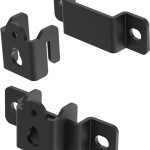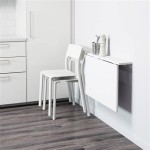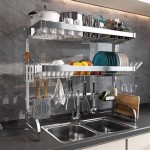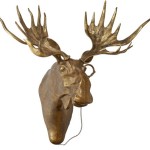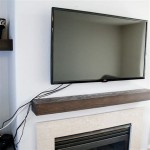Samsung Curved TV Wall Mount: A Comprehensive Guide
Mounting a television on a wall offers significant benefits, including space saving, improved viewing angles, and enhanced aesthetics. For Samsung curved televisions, selecting the appropriate wall mount is crucial to ensure stability, optimal positioning, and preservation of the television's unique design. This article provides a detailed guide to understanding the factors involved in choosing and installing a wall mount for a Samsung curved television.
The curvature of Samsung televisions presents specific challenges for wall mounting. Standard flat-screen wall mounts are often unsuitable due to the television's shape. The ideal mount must accommodate this curve to ensure a secure and flush fit against the wall, preventing undue stress on the screen and ensuring a safe installation. Understanding the different types of mounts, compatibility issues, and installation procedures is essential for a successful setup.
Understanding Wall Mount Types for Curved TVs
Several types of wall mounts are available, each with its own advantages and disadvantages when used with a curved Samsung television. The primary types include fixed mounts, tilting mounts, and full-motion mounts. Understanding the differences between these mounts is critical for selecting the one that best suits individual viewing needs and spatial constraints.
Fixed Mounts: These are the simplest and most affordable option. They hold the television close to the wall, providing a sleek and minimalist look. However, they offer no adjustability after installation, meaning the viewing angle is fixed. For curved televisions, a fixed mount needs to be specifically designed to accommodate the curve, ensuring the television sits flush against the wall at the correct angle. Generic flat mounts may leave gaps or put stress on the television panel.
Tilting Mounts: Tilting mounts allow the television to be tilted vertically, improving viewing angles from different positions in the room. This can be particularly useful in bedrooms or rooms where the television is mounted higher than eye level. When choosing a tilting mount for a curved television, ensure it offers sufficient tilt range to compensate for the curve and prevent distortion. The mount should also be robust enough to support the weight of the curved television without compromising the tilt mechanism.
Full-Motion Mounts: Also known as articulating mounts, these provide the greatest flexibility. They allow the television to be tilted, swiveled, and extended away from the wall, offering a wide range of viewing angles. Full-motion mounts are ideal for rooms with multiple viewing locations or where glare is a concern. For curved televisions, a full-motion mount must be exceptionally sturdy due to the weight and curvature of the screen. The articulating arms must be capable of maintaining the desired position without sagging or drifting over time. It is also important to consider the extension range offered by the mount to ensure the curved television can be positioned correctly within the chosen viewing area.
When selecting a wall mount, verify that it is specifically designed or certified for use with curved televisions. Many manufacturers explicitly state compatibility with Samsung curved models. This ensures the mount has been tested and proven to support the television's weight and shape safely.
Key Considerations Before Installation
Before proceeding with the installation, several factors need to be carefully considered. These include the television's weight and VESA compatibility, wall type, cable management solutions, and safety precautions. Overlooking these aspects can lead to installation failures, damage to the television, or even personal injury.
Weight and VESA Compatibility: Every television, including Samsung curved models, has a specified weight. The chosen wall mount must be rated to support this weight safely and with a safety margin. The VESA (Video Electronics Standards Association) standard defines the screw hole pattern on the back of the television used for mounting. Measure the distance between these holes horizontally and vertically to determine the VESA compatibility requirement. The wall mount must support this VESA pattern. Samsung televisions utilize various VESA patterns, so confirming compatibility is imperative.
Wall Type: The type of wall is crucial for a secure installation. Common wall types include drywall, wood studs, concrete, and brick. Drywall alone is generally insufficient to support the weight of a television; the mount must be secured to wood studs or reinforced with specialized drywall anchors. Concrete and brick walls provide a solid base but require specialized drilling equipment and anchors. Using the wrong type of anchor can result in the television falling off the wall, causing damage and potential injury.
Cable Management: Wall mounting a television typically involves concealing cables for a cleaner look. Consider how cables will be routed from the television to power outlets and other devices. Several options exist, including in-wall wire concealment kits, cable raceways, and cable sleeves. Planning cable management in advance ensures a professional and aesthetically pleasing installation. Some wall mounts incorporate built-in cable management features, which can simplify the process.
Safety Precautions: Safety is paramount when installing a wall mount. Disconnect the television from the power outlet before commencing work. Have a second person assist with lifting and positioning the television, especially for larger curved models. Use appropriate safety gear, such as gloves and eye protection. Ensure the wall mount is securely fastened to the wall using the correct tools and hardware. Double-check all connections and ensure the television is stable before releasing it. Consult a professional installer if unsure about any step of the process.
Step-by-Step Installation Guide
Installing a wall mount for a Samsung curved television requires careful planning and execution. The following steps provide a general guide to the installation process. Always refer to the wall mount and television manufacturer's instructions for specific details and recommendations.
Step 1: Preparation: Gather all necessary tools and materials, including the wall mount, drill, stud finder, level, measuring tape, screwdriver, appropriate screws and anchors, and cable management accessories. Clear the area around the wall where the television will be mounted.
Step 2: Stud Location: Use a stud finder to locate the wood studs behind the drywall. Mark the stud locations with a pencil. If mounting on concrete or brick, identify suitable anchor points based on the wall mount instructions.
Step 3: Mount Attachment: Attach the wall plate to the wall, aligning it with the marked stud locations. Use the appropriate screws and anchors for the wall type. Ensure the wall plate is level using a bubble level. If using drywall anchors, follow the manufacturer's instructions carefully to ensure proper installation and weight capacity.
Step 4: Bracket Installation: Attach the mounting brackets to the back of the television using the screws that correspond to the VESA pattern. Ensure the brackets are securely fastened and aligned correctly. Some curved televisions may require spacers to compensate for the curvature of the back panel.
Step 5: Television Mounting: With the assistance of another person, carefully lift the television and align the brackets with the wall plate. Secure the television to the wall plate using the provided locking mechanisms or screws. Double-check all connections to ensure the television is securely mounted.
Step 6: Cable Management: Connect all necessary cables to the television, such as power, HDMI, and audio cables. Route the cables through the chosen cable management system to conceal them and prevent them from dangling. Secure the cables with cable ties or clips to maintain a neat and organized appearance.
Step 7: Final Adjustments: Make any necessary adjustments to the television's position, such as tilting or swiveling, to achieve the desired viewing angle. Verify that the television is level and stable. Clean the screen and surrounding area to remove any dust or fingerprints.
Step 8: Testing: Turn on the television and verify that it is functioning correctly. Test all inputs and features to ensure proper connectivity. Make any final adjustments to the cable management system or television positioning as needed.
Proper installation and selecting the right wall mount for a Samsung curved television requires careful consideration of numerous factors. By understanding the different types of mounts, considering the wall type and VESA compatibility, and following the step-by-step installation guide the curved tv can be safely and securely to the wall.

How To Mount A Curved Lcd Tv Securely The Wall

Hot Tips For Ing A Cool Tv Part 3 Wall Mount Or Stand Page 1000 Samsung Global Newsroom

No Gap Wall Mount For 65 55 Q Series Tvs Television Home Theater Accessories Wmn M11eb Za Samsung Us

How To Wall Mount A Curved Tv 6 Steps Instructables

Curved Uled Uhd Tv Wall Mount Swivel Lcd Led Full Motion 40 42 48 50 55 60 65 70

How To Mount A Curved Lcd Tv Securely The Wall

No Gap Wall Mount For 65 55 Q Series Tvs Television Home Theater Accessories Wmn M11eb Za Samsung Us

Samsung Introduces World S First Tv Matching Curved Soundbar Global Newsroom

Curved Tv Wall Mount Bracket

55 Uhd 4k Curved S Tv Mu6500 Series 6 Un65mu6500fxza Samsung Latin En

